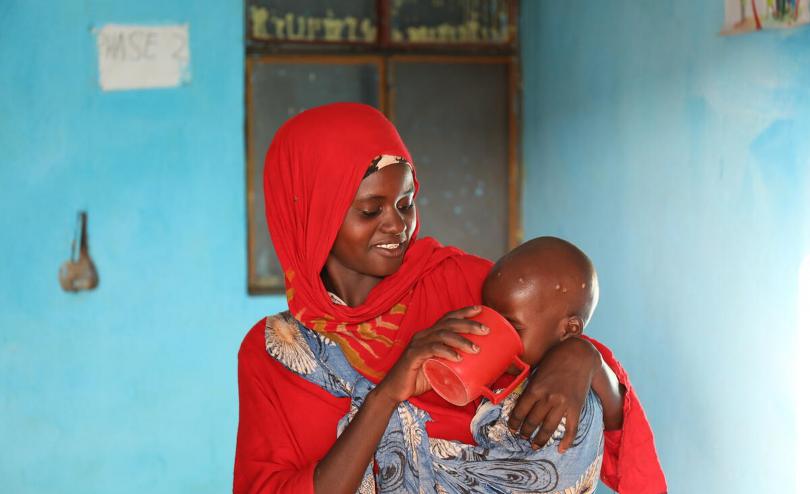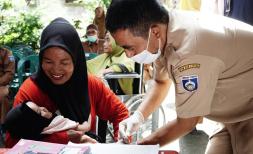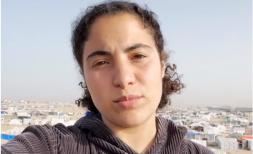The Global Financing Facility's contribution to improving health financing and health outcomes in Ethiopia

Jamilah*, 25 feeding her daughter Leila*, 20 months, treatment for severe acute malnutrition in Kelafo Stabilization Center, Ethiopia. Save the Children
According to the report published by the World Bank and World Health Organization (WHO), almost half of the world's vulnerable population including women, children, and adolescents did not have access to essential and quality health services at the point of 2021. THE STATE OF THE WORLD’S CHILDREN 2023 estimates that 287,000 women died from pregnancy-related causes in 2020 and 5 million children under five lost their lives in 2021 worldwide. Majority of these deaths are due to preventable causes. Halting preventable deaths among children and other vulnerable groups requires increasing investment in Reproductive, Maternal, Newborn, Child and Adolescent Health and Nutrition (RMNCAH-N) services. It is critical that we build equitable, resilient, and inclusive health systems and health financing systems that can deliver quality health services for all.
SUSTAINABLE APPROACHES TO STRENGTHEN EXISITING HEALTH SYSTEMS
At a time of growing fragmentation, limited fiscal space, and greater demand for health care, governments must be supported to improve self-sufficiency, and unleash more resources beyond the dollar value committed by donors.
The Global Financing Facility for Women, Children and Adolescents (GFF) is one step ahead in delivering on this promise. The GFF, founded in 2015, has been a key financing mechanism that addresses health inequities and improve access to healthcare for women, children, and adolescents by strengthening health systems. The GFF aims to prevent 3.8 million maternal deaths, 101 million child deaths, and 21 million stillbirths in high-burden countries by 2030. The GFF works with countries to build systems capacity, align funding behind a national health plan, and unlock policies, systems and financing that improve health. The GFF’s country-driven partnership approach brings together stakeholders behind government priorities including development partners, civil society organizations and the private sector. Importantly, the GFF’s country-driven model supports governments in maximizing the impact of the investments by using domestic and external resources effectively and efficiently.
Save the Children carried out an independent assessment of the GFF to review its processes, successes, and challenges, using Ethiopia as a case study. The report Sustainable Approaches to Strengthen Existing Health Systems: The Global Financing Facility’s Contribution to Improving Health Financing and Health Outcomes in Ethiopia discusses successes and what can be done to further strengthen health systems and progress towards achieving universal health coverage – by the GFF, donor governments, and other Global Health Initiatives.
GFF investments in Ethiopia are channeled into a pooled fund, managed by the Federal Government of Ethiopia. Working within the country's system is important for sustaining progress and results. In addition, through smart partnerships, such as with the World Bank's International Development Association[i], the GFF has leveraged an additional 10 dollars for every dollar it provided in health services like reproductive, maternal, neonatal and child health. Efforts beyond just the financing provided are also critical in furthering efficiency and equity gains, such as the technical support that the GFF provides to the government to inform resource allocation decisions and improve national planning and budgeting processes.
Our research found that the GFF’s country driven model promotes efficiency and effectiveness in domestic and external resource use which reduces fragmentation, duplication of efforts and maximises value for money from aid spending.
In addition to reducing preventable deaths of women, newborns, children, and adolescents, strengthening health systems, particularly primary health care (PHC) systems, GFF also improves countries' capacity to prepare for and respond to future health emergencies.
INSIGHTS FROM THE GFF FOR IMPROVING EFFICIENCY AND AID EFFECTIVENESS
The GFF holds tremendous potential to continue making significant strides in improving RMNCAH-N outcomes worldwide. As well as building on successes in GFF programming to achieve UHC, an opportunity presents itself at a time when critical questions are being raised on the effectiveness of the current global health architecture, for sharing learning and good practice with others. Highlighted below, our research into the GFF model has provided valuable insights that could support others to improve aid effectiveness in practice:

The GFF’s current Deliver the Future campaign seeks to secure at least US$800 million by the end of 2023. This essential funding will enable the GFF to mobilise an additional US$20.5 billion to enhance its impact. With this increased financial support, the GFF intends to provide second-round financing to 27 existing partner countries and extend its assistance to an additional seven countries. This is also a timely opportunity for the GFF to hone its scope, expand its scale, capitalize on gains made, reflect on lessons learnt and provide examples of best practice and models for other global health initiatives.
Interested in reading the full report? Download it here
[i] International Development Association (IDA) is an institution established in 1960 as the part of the World Bank. IDA’s objective is to reduce poverty by providing zero to low-interest loans, which is called “credits” and grants for programs that promote the economic advancement, increase equity, and improve people’s quality of life.







